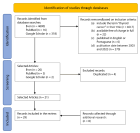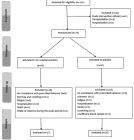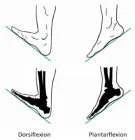Abstract
Research Article
The relationship of cell phone use and aggression among young adults with moderating roles of gender and marital status
Asma Naseer and Waqar Husain*
Published: 26 August, 2020 | Volume 4 - Issue 1 | Pages: 055-058
The use of cell phones has remarkably increased in the last two decades with several pros and cons. The negative consequences of cell phones on mental health have not been studied widely. Aggression, in this regard was a completely neglected area. The present study, therefore, was carried out to investigate the relationship between cell phone use and aggression and to further identify the moderating roles of gender and marital status between cell phone use and aggression. The inquiry included 500 young adults from Rawalpindi, Pakistan. Buss and Perry Aggression Questionnaire was administered. It was hypothesized that there would be a strong positive relationship between cell phone use and aggression. It was further hypothesized that gender and marital status would be significant moderators between cell phone use and aggression. The results supported the hypotheses on significant differences and made a significant contribution in the existing scientific literature.
Read Full Article HTML DOI: 10.29328/journal.ida.1001020 Cite this Article Read Full Article PDF
Keywords:
Aggression; IT consumption; Cellphone use
References
- Pakistan Telecommunication Authority. 129.6 Million subscribers in Pakistan. 2014. http://propakistani.pk/2013/11/18/mobile-phone-users-in-pakistan-reach-129-6-million/
- Johansson A, Nordin S, Heiden M, Sandström M. Symptoms, personality traits, and stress in people with mobile phone-related symptoms and electromagnetic hypersensitivity. J Psychosom Res. 2010; 68: 37-45. PubMed: https://pubmed.ncbi.nlm.nih.gov/20004299/
- Takao M, Takahashi S, Kitamura M. Addictive personality and problematic mobile phone use. Cyberpsychol Behav. 2009; 12: 501-507. PubMed: https://pubmed.ncbi.nlm.nih.gov/19817562/
- Ezoe S, Toda M, Yoshimura K, Naritomi A, Den R, Morimoto K. Relationships of personality and lifestyle with mobile phone dependence among female nursing students. Social Behav Personal Int J. 2009; 37: 231-238.
- Sansone RA, Sansone LA. Cell phones: the psychosocial risks. Innov Clin Neurosci. 2013; 10: 33-37. PubMed: https://pubmed.ncbi.nlm.nih.gov/23439568/
- Cohen S. Aftereffects of stress on human performance and social behavior: a review of research and theory. Psychological Bulletin.1980; 88: 82-108. PubMed: https://pubmed.ncbi.nlm.nih.gov/7403392/
- Underwood M, Galen B, Paquette J. Top ten challenges for understanding gender and aggression in children: Why can't we all just get along? Social Development. 2001; 10: 248-266.
- Basow SA, Cahill KF, Phelan JE, Longshore K, McGillicuddy-DeLisi A. Perceptions of relational and physical aggression among college students: Effects of gender of perpetrator, target, and perceiver. Psychology of Women Quarterly. 2017; 31: 85-95.
- Conway AM. Girls, aggression, and emotion regulation. Am J Orthopsychiatry. 2005; 75: 334-336.
- Crick NR, Grotpeter JK. Relational aggression, gender, and social‐psychological adjustment. Child Dev. 1995; 66: 710-722. PubMed: https://pubmed.ncbi.nlm.nih.gov/7789197/
- Forrest S, Eatough V, Shevlin M. Measuring adult indirect aggression: The development and psychometric assessment of the indirect aggression scales. Aggressive Behav. 2005; 31: 84-97.
- Gomes MM. A concept analysis of relational aggression. J Psychiatric Mental Health Nurs. 2007; 14: 510-515.
- Marini ZA, Dane AV, Bosacki SL, Cura YLC. Direct and indirect bully‐victims: differential psychosocial risk factors associated with adolescents involved in bullying and victimization. Aggressive Behav. 2006; 32: 551-569.
- Coyne SM, Archer J, Eslea M. We're not friends anymore! Unless…”: The frequency and harmfulness of indirect, relational, and social aggression. Aggressive Behav. 2006; 32: 294-307.
- Loudin L, Alexandra L, Sheri R. Relational aggression in college students: Examining the roles of social anxiety and empathy. Aggressive Behav. 2003; 29: 430-439.
- Archer J, Coyne S. An integrated review of indirect, relational, and social aggression. Pers Soc Psychol Rev. 2005; 9: 212-230. PubMed: https://pubmed.ncbi.nlm.nih.gov/16083361/
- Owens L, ShuteR, Slee P. Guess what I just heard!: Indirect aggression among teenage girls in Australia. Aggressive Behav. 2000; 26: 67-83.
- Storch EA, Bagner DM, Geffken GR, Baumeister AL. Association between overt and relational aggression and psychosocial adjustment in undergraduate college students. Violence Vict. 2004; 19: 689-700. PubMed: https://pubmed.ncbi.nlm.nih.gov/16004070/
- Cairns RB, Cairns BD, Neckerman HJ, Ferguson LL, Gariepy JL. Growth and aggression: I. Childhood to early adolescence. Develop Psychol. 1989; 25: 320-324.
- Green LR, Richardson DR, Lago T. How do friendship, indirect, and direct aggression relate? Aggressive Behavior. 1996; 22: 81-86.
- Bowie BH. Relational aggression, gender, and the developmental process. Journal of Child and Adolescent Psychiatric Nursing. 2007; 20: 107-115.
- Young EL, Boye AE, Nelson DA. Relational aggression: Understanding, identifying, and responding in schools. Psychology in the Schools. 2006; 43: 297-312.
- Merrell K W, Buchanan R, Tran OK. Relational aggression in children and adolescents: A review with implications for school settings. Psychology in the Schools. 2006; 43: 345-360.
- Husain W. Prevalent Tendencies for Mental Disorders in Pakistan. Clínica y Salud. 2018; 29: 34-38.
- Husain W. Barriers in Seeking Psychological Help: Public Perception in Pakistan. Community Ment Health J. 2019; 56: 75-78. PubMed: https://pubmed.ncbi.nlm.nih.gov/31542848/
- Husain W, Faize FA. Public awareness of psychological problems in Pakistan. Ment Health Rev J. 2020; 25: 35-45.
- Buss A, Perry M. The aggression questionnaire. J Pers Soc Psychol. 1992; 63: 452-459. PubMed: https://pubmed.ncbi.nlm.nih.gov/1403624/
- Thomée S, Dellve L, Härenstam A, Hagberg M. Perceived connections between information and communication technology use and mental symptoms among young adults-a qualitative study. BMC Public Health. 201; 10: 66-68. PubMed: https://pubmed.ncbi.nlm.nih.gov/20152023/
- Dixit S. A study to evaluate mobile phone dependence among students of a medical college and associated hospital of central India. Indian J Community Med. 2010; 2: 339-341. PubMed: https://www.ncbi.nlm.nih.gov/pmc/articles/PMC2940198/
- Hunt J, Eisenberg D. Mental health problems and help-seeking behavior among college students. J Adolesc Health. 2010; 46: 3-10. PubMed: https://pubmed.ncbi.nlm.nih.gov/20123251/
- Lonn S, Ahlbom A, Hall P, Feychting M. Mobile phone use and the risk of acoustic neuroma. Epidemiology. 2004; 15: 653-659. PubMed: https://www.ncbi.nlm.nih.gov/pmc/articles/PMC2361634/
- Schoemaker MJ, Swerdlow AJ, Ahlbom A, Auvinen A, Blaasaas KG, et al. Mobile phone use and risk of acoustic neuroma: results of the Interphone case-control study in five North European countries. Br J Cancer. 2005; 93: 842-848. PubMed: https://www.ncbi.nlm.nih.gov/pmc/articles/PMC2361634/
- Maccoby EE, Jacklin CN. The psychology of sex differences. Stanford: Stanford University Press. 1974.
- Coie JD, Dodge KA. Aggression and antisocial behavior. In W. Damon & N. Eisenberg (Eds). Handbook of Child Psychology, Vol. 3: Social, emotional and personality development. Stanford: Stanford University Press. 1997.
- Bjorkqvist K, Kirsti M, Lagerspetz, Karin O. Sex Differences in Covert Aggression. Aggressive Behav. 1994; 202: 27-33.
Similar Articles
-
Anti-anxiety effects in mice following acute administration of Ficus Thonningii (wild fig)Aduema W*,Akunneh-Wariso C,Ejiofo DC,Amah AK. Anti-anxiety effects in mice following acute administration of Ficus Thonningii (wild fig). . 2018 doi: 10.29328/journal.ida.1001009; 2: 040-047
-
The relationship of cell phone use and aggression among young adults with moderating roles of gender and marital statusAsma Naseer,Waqar Husain*. The relationship of cell phone use and aggression among young adults with moderating roles of gender and marital status. . 2020 doi: 10.29328/journal.ida.1001020; 4: 055-058
Recently Viewed
-
The use of Allergoids and Adjuvants in Allergen ImmunotherapyCelso Eduardo Olivier*. The use of Allergoids and Adjuvants in Allergen Immunotherapy. Arch Asthma Allergy Immunol. 2017: doi: 10.29328/journal.haard.1001006; 1: 040-060
-
Inducible Laryngeal Obstruction/Vocal Cord Dysfunction and the Role It Plays in Refractory AsthmaJay I Peters*,Jorge Villalpando,Sandra G Adams. Inducible Laryngeal Obstruction/Vocal Cord Dysfunction and the Role It Plays in Refractory Asthma. Arch Asthma Allergy Immunol. 2017: doi: 10.29328/journal.haard.1001005; 1: 036-039
-
Prevalence of reported drug allergy and its impact on Beta lactam use with financial and health implicationsJoanna Lukawska*,Abirami Murugesh-Warre#,Ranu Malhin#,Yogini Jani,Christopher Corrigan,David Walker,Harsha Kariyawasam. Prevalence of reported drug allergy and its impact on Beta lactam use with financial and health implications. Arch Asthma Allergy Immunol. 2017: doi: 10.29328/journal.haard.1001004; 1: 028-035
-
The effects of early low dose exposures to the Environmental Estrogen Bisphenol A on the Development of Childhood AsthmaTerumi Midoro-Horiuti*,Randall M Goldblum. The effects of early low dose exposures to the Environmental Estrogen Bisphenol A on the Development of Childhood Asthma. Arch Asthma Allergy Immunol. 2017: doi: 10.29328/journal.haard.1001003; 1: 015-027
-
Features of Interferon and Cytokine Status in Atopic DermatitisOspelnikova TP*,Gevorkyan OV, Mironova TV,Andreeva SA,Kolodyazhnaya LV,Ershov FI. Features of Interferon and Cytokine Status in Atopic Dermatitis. Arch Asthma Allergy Immunol. 2017: doi: 10.29328/journal.haard.1001002; 1: 009-014
Most Viewed
-
Impact of Latex Sensitization on Asthma and Rhinitis Progression: A Study at Abidjan-Cocody University Hospital - Côte d’Ivoire (Progression of Asthma and Rhinitis related to Latex Sensitization)Dasse Sery Romuald*, KL Siransy, N Koffi, RO Yeboah, EK Nguessan, HA Adou, VP Goran-Kouacou, AU Assi, JY Seri, S Moussa, D Oura, CL Memel, H Koya, E Atoukoula. Impact of Latex Sensitization on Asthma and Rhinitis Progression: A Study at Abidjan-Cocody University Hospital - Côte d’Ivoire (Progression of Asthma and Rhinitis related to Latex Sensitization). Arch Asthma Allergy Immunol. 2024 doi: 10.29328/journal.aaai.1001035; 8: 007-012
-
Causal Link between Human Blood Metabolites and Asthma: An Investigation Using Mendelian RandomizationYong-Qing Zhu, Xiao-Yan Meng, Jing-Hua Yang*. Causal Link between Human Blood Metabolites and Asthma: An Investigation Using Mendelian Randomization. Arch Asthma Allergy Immunol. 2023 doi: 10.29328/journal.aaai.1001032; 7: 012-022
-
An algorithm to safely manage oral food challenge in an office-based setting for children with multiple food allergiesNathalie Cottel,Aïcha Dieme,Véronique Orcel,Yannick Chantran,Mélisande Bourgoin-Heck,Jocelyne Just. An algorithm to safely manage oral food challenge in an office-based setting for children with multiple food allergies. Arch Asthma Allergy Immunol. 2021 doi: 10.29328/journal.aaai.1001027; 5: 030-037
-
Snow white: an allergic girl?Oreste Vittore Brenna*. Snow white: an allergic girl?. Arch Asthma Allergy Immunol. 2022 doi: 10.29328/journal.aaai.1001029; 6: 001-002
-
Cytokine intoxication as a model of cell apoptosis and predict of schizophrenia - like affective disordersElena Viktorovna Drozdova*. Cytokine intoxication as a model of cell apoptosis and predict of schizophrenia - like affective disorders. Arch Asthma Allergy Immunol. 2021 doi: 10.29328/journal.aaai.1001028; 5: 038-040

If you are already a member of our network and need to keep track of any developments regarding a question you have already submitted, click "take me to my Query."


















































































































































